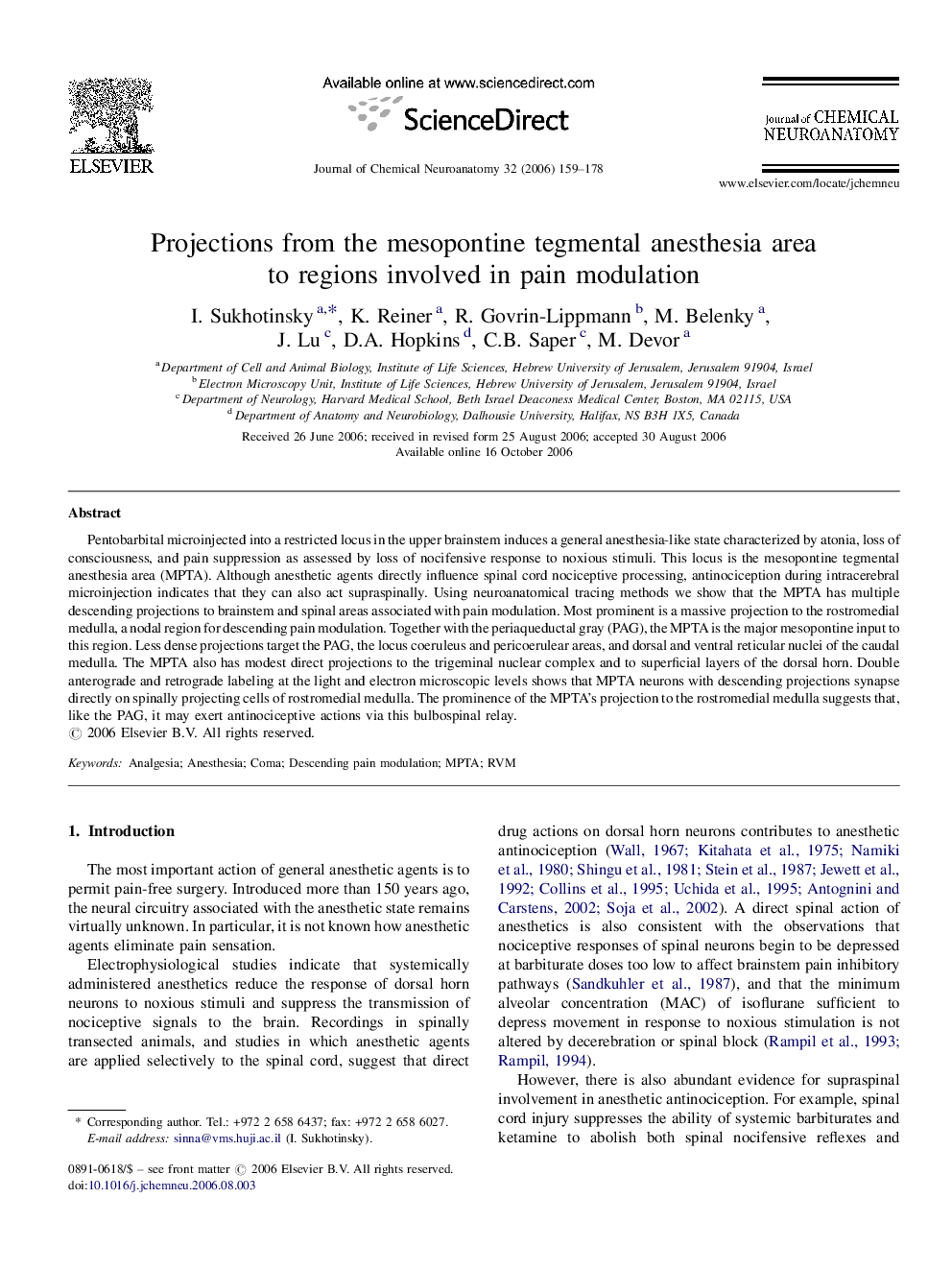| Article ID | Journal | Published Year | Pages | File Type |
|---|---|---|---|---|
| 1989256 | Journal of Chemical Neuroanatomy | 2006 | 20 Pages |
Pentobarbital microinjected into a restricted locus in the upper brainstem induces a general anesthesia-like state characterized by atonia, loss of consciousness, and pain suppression as assessed by loss of nocifensive response to noxious stimuli. This locus is the mesopontine tegmental anesthesia area (MPTA). Although anesthetic agents directly influence spinal cord nociceptive processing, antinociception during intracerebral microinjection indicates that they can also act supraspinally. Using neuroanatomical tracing methods we show that the MPTA has multiple descending projections to brainstem and spinal areas associated with pain modulation. Most prominent is a massive projection to the rostromedial medulla, a nodal region for descending pain modulation. Together with the periaqueductal gray (PAG), the MPTA is the major mesopontine input to this region. Less dense projections target the PAG, the locus coeruleus and pericoerulear areas, and dorsal and ventral reticular nuclei of the caudal medulla. The MPTA also has modest direct projections to the trigeminal nuclear complex and to superficial layers of the dorsal horn. Double anterograde and retrograde labeling at the light and electron microscopic levels shows that MPTA neurons with descending projections synapse directly on spinally projecting cells of rostromedial medulla. The prominence of the MPTA's projection to the rostromedial medulla suggests that, like the PAG, it may exert antinociceptive actions via this bulbospinal relay.
